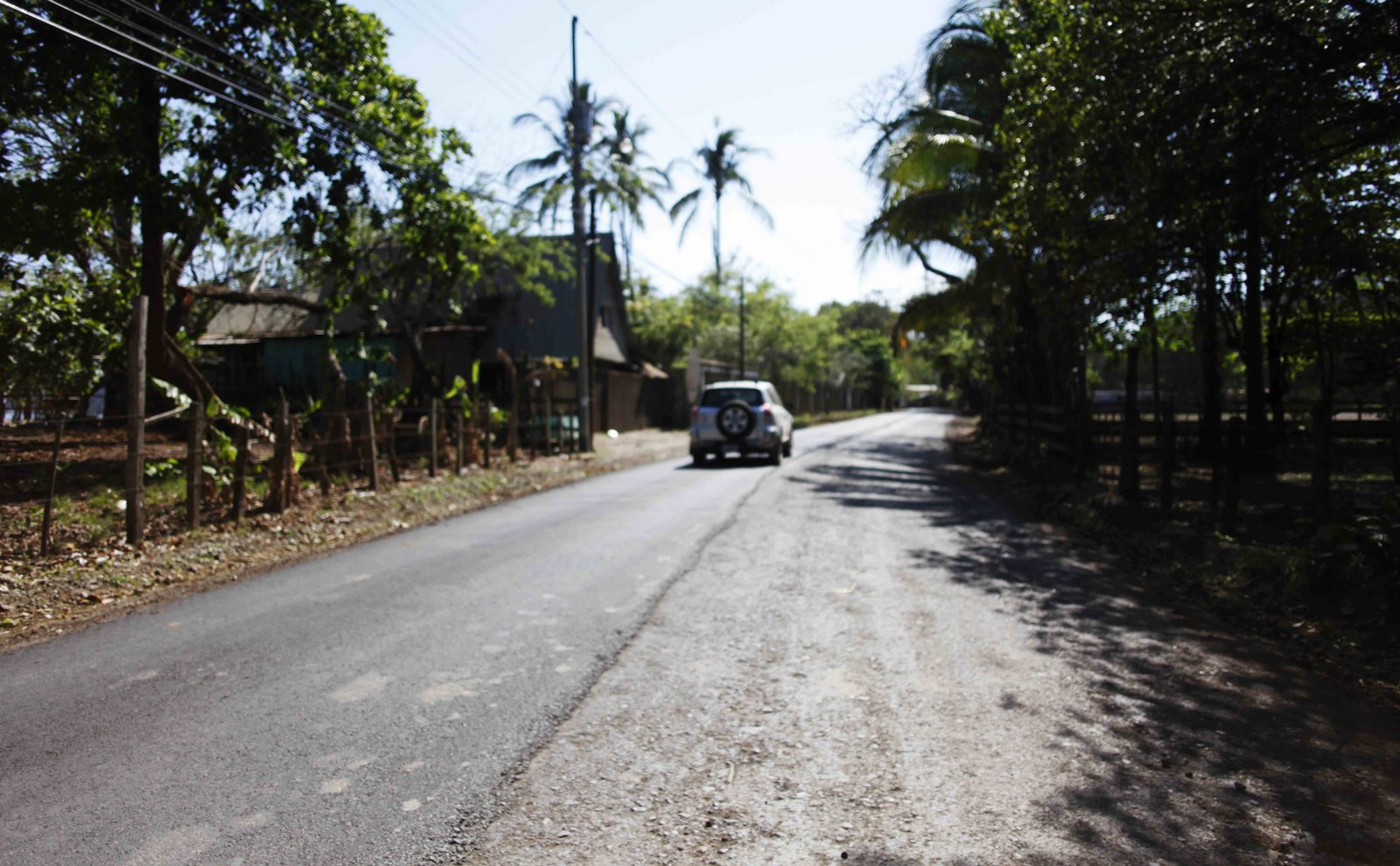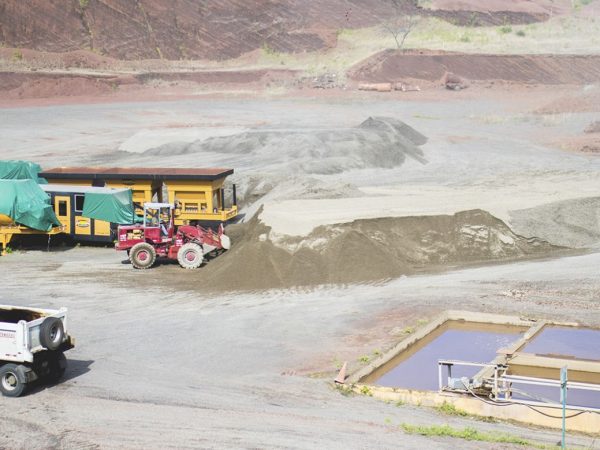
“This job doesn’t work… there are already a lot of potholes… and they left it half done.” These are some of the comments of those who travel along Route 160 from Samara to Nosara, just four months after some sections along the route got paved. The communities of Esperanza and Nosara still have not been paved, and in some sectors such as Barco Quebrado and Garza there are already potholes.
Carlos Campos, who lives in Samara, affirmed that “investing that much money in a job so badly done was a waste of money.” He thinks that applying the asphalt on muddy roads was a bad decision because it doesn’t have a solid base, and the pavement cracks with the arrival of the seasonal rains.
The plan to partially pave 8.5 kilometers from San Fernando to Nosara started this year on March 19 with an investment of 400 million colones ($800,000). However so far only half has been paved.
Julio Viales, regional director of MOPT, said the reason for the delay is due to the expiration of the contract of transportation of the asphalt bitumen from the plant of the Costa Rican Oil Refinery (RECOPE) to the plant of the El Chopo quarry in Cañas, which expired on July 20 and was renewed on August 23.
Viales pointed out that the objective of paving these sections is to mitigate the effects of dust for people living along the route and is not definitive work but rather palliative.
He also mentioned that he recommended both to neighbors and to the Nosara Integral Development Association (ADIN) waiting until the arrival of dry season to lay the foundation, but he yielded to the popular clamor to remedy the situation as soon as possible.
“I am aware that this is not a first-class highway, far from it, but you can’t say it’s a waste of money either, because it is being given maintenance and is mitigating dust. It takes 12 billion colones ($24,000,000) to have a real highway, but MOPT doesn’t have that money yet,” he said.
He also acknowledged that “in Barco Quebrado, the base of the ground is more claylike and the work started in the summer, when the surface is dry and compact, but in winter it softens and tends to break,” he explained.
However, Viales clarified that in the sections where there are potholes, they will patch them and perform maintenance in September and October.
According to Viales, the asphalt cap that is being applied in the sections is 7.6 centimeters thick, and the road surface was raised 10 to 15 centimeters.
Ana Luisa Elizondo, an official of the National Laboratory of Materials and Structural Models (LANAMME) explained that there is no exact amount of thickness that the cap of asphault should have. It depends on the quantity and weight of vehicles traveling over the road, the quality of the materials used, the drainage conditions and the period of design of the route.
“I can not evaluate the work that MOPT is doing on the road nor say if it’s good or bad because I do not know all the elements. However, if the objective of the work is to mitigate dust, I think that putting a 7.6-centimeter cap of asphalt is more than what is usually done. For this type of work, what is applied is simply an asphalt emulsion to control the dust,” explained Elizondo.
José Alberto Zamora, resident of Nosara, expressed his opinion that the asphalt work is badly done. He thinks the route needs 30-40 centimeters of material, that the base needs to be compacted more and also that it would have been better to use gravel from the river rather than the material they used.
For his part, Luis Acosta, president of the Samara Development Association, was happy with the asphalt work done in San Fernando, the initial stretch from the Samara gas in the direction of Nosara. He estimates that this section is well done and that the asphalt should last up to ten years.







Comments